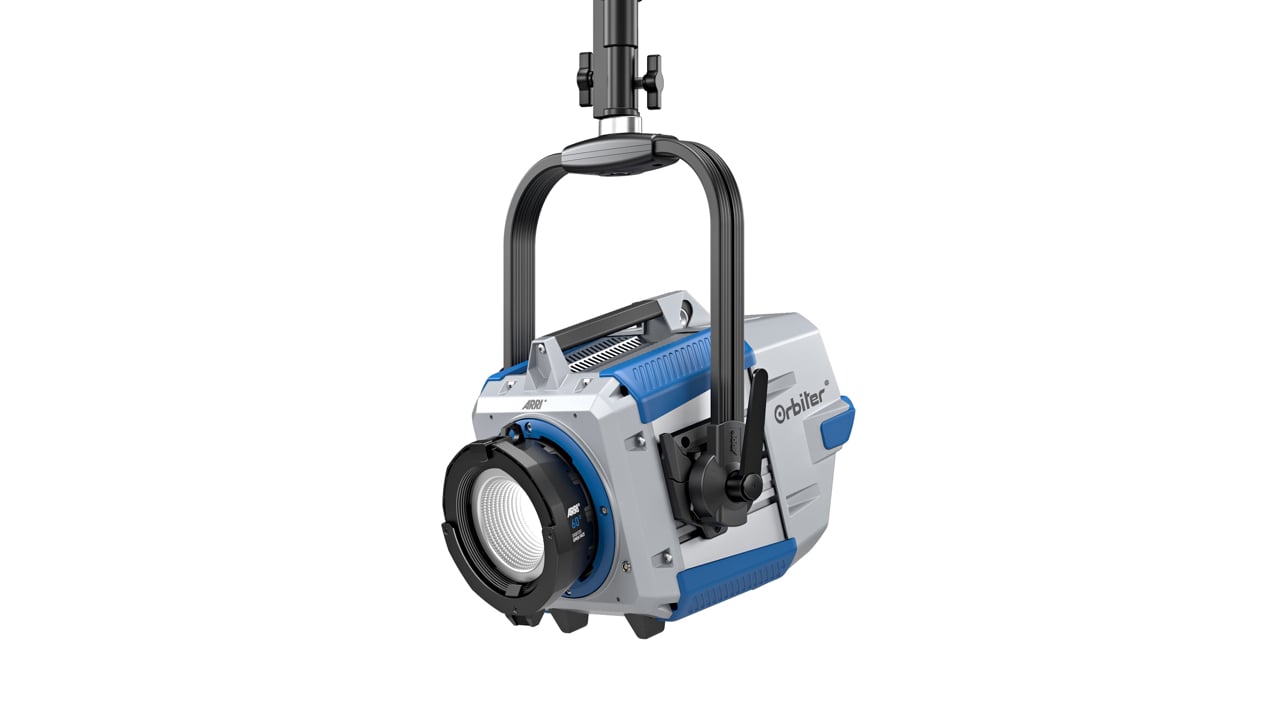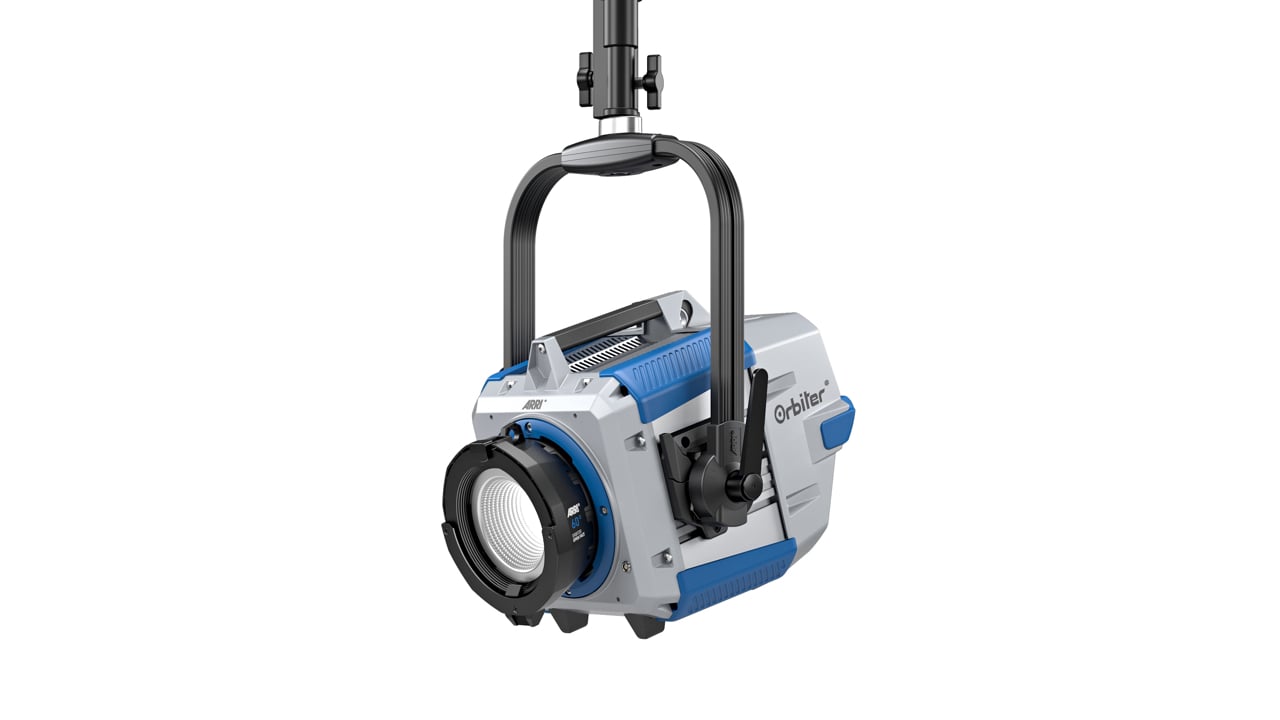
 For the moment, the ARRI Orbiter is probably the state of the art in digital lighting
For the moment, the ARRI Orbiter is probably the state of the art in digital lighting
ARRI’s new Orbiter is an ultra-bright, tunable, directional LED picture that the company says could change the way the industry looks at digital lighting. It could well have a point.
It’s difficult to know where to start with the new ARRI Orbiter, but one thing is obvious and that is that you are in the presence of serious engineering. ARRI has basically taken all the craft, elegance and precision that has helped make its cameras such objects of necessity and desire at the top end of the industry and applied all that to a light. And the results are as spectacular as you would expect.
It is the changeable optics that are probably the core innovation. The unit’s Quick Lighting Mount allows for optics with quite different properties to be attached to the fixture. The high-output, directional beam of the open face optic is ideal for throwing light long distances, and the high precision of the projection optics creates a perfect circle of light that can be shaped with cutters, focus, and gobos. The dome optic provides omnidirectional, soft light, great for illuminating large spaces, and a universal QLM adapter creates a direct mounting point for Orbiter-specific Chimera and DoPchoice products.
Including a red, green, blue, amber, cyan, and lime LED, the ARRI Spectra six-color light engine translates into a wider color gamut, with accurate colors and higher color rendition across the entire CCT range. Skin tones are billed as “amazing and natural”. Orbiter has a large CCT range of 2,000 to 20,000 K and using a combination of three dimming techniques, its electronics provide smooth dimming down to zero without color changes or jumps.
The LiOS software is new and builds on over five years of development for the company’s SkyPanel. Eight-color modes include CCT, HSI, individual color, x/y coordinates, gel and source matching, lighting effects, and the new color sensor mode that measures ambient light and recreates it through Orbiter’s output. Other new features in LiOS include simplified DMX modes, performance-enhancing operational modes, over 240 slots for favorites to be stored, optics recognition, multi-language support, a custom boot screen, and there’s more still to come.
A color sensor measures the ambient light, while there is also a three-axis accelerometer and magnetometer for sensing the pan, tilt, roll, and heading of the fixture, heat sensors for keeping the LEDs and electronics at exactly the right temperature, and an ambient light sensor for automatically dimming the control panel display. All these sensors not only make for a better user experience and increased control over the fixture, but should also improve the post workflow when using the light.
Also featuring a removable control panel with up to 15m operation, a full suite of input and output connectors, and robust, weatherproof housing, it is an astonishingly powerful and flexible unit. Likely it will be astonishingly expensive too, but this looks to be one of those occasions when you really do get what you pay for. Expect the first models to ship Q1 next year.
Tags: Production


Comments